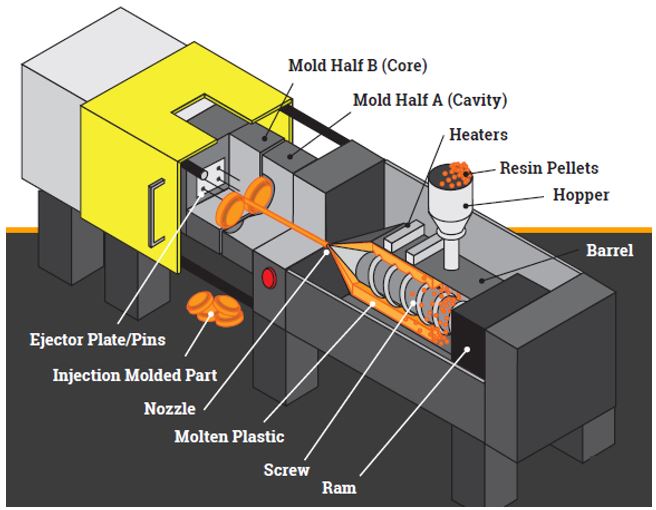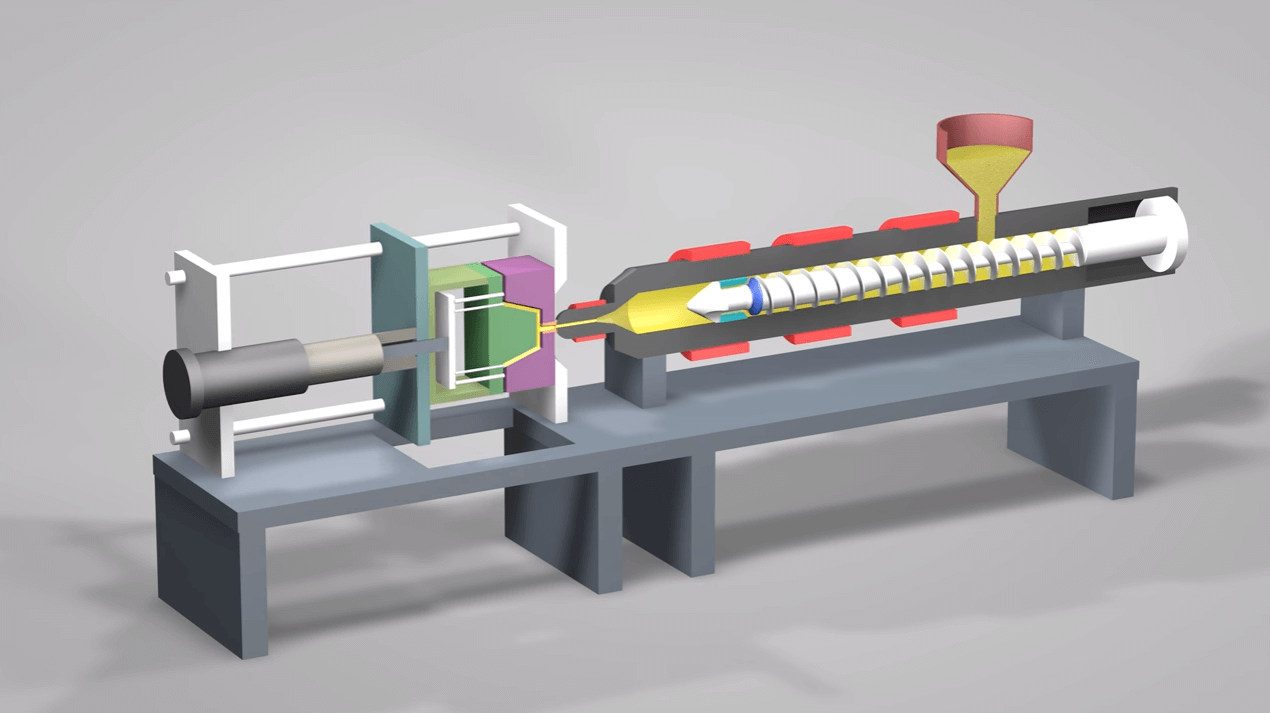The Advantages of Using Plastic Injection Molding for Custom Components Production
The Advantages of Using Plastic Injection Molding for Custom Components Production
Blog Article
Recognizing the Essentials of Plastic Injection Molding Processes
Plastic shot molding offers as a foundation of contemporary manufacturing, offering a methodical approach to producing complex elements with precision. Exploring these important components can expose just how even minor changes can lead to considerable enhancements in production end results, elevating concerns concerning the possibility for technology in this established process.
What Is Plastic Injection Molding?
Plastic injection molding is an extensively made use of production process that changes thermosetting and thermoplastic products right into accurate and complex forms. This method is preferred for its ability to produce high quantities of identical get rid of remarkable precision, making it an important method in different markets, including automotive, consumer products, and clinical devices.
The process entails melting the selected plastic product and infusing it right into a mold and mildew under high pressure. The mold, made to the specifications of the wanted component, enables the molten plastic to form as it cools down and strengthens. As soon as the product has actually set, the mold is opened, and the ended up part is ejected.
Plastic injection molding uses numerous advantages, including minimized waste, uniformity in manufacturing, and the capacity to incorporate intricate styles that may be challenging with various other making methods. Additionally, it supports a broad variety of products, each giving special homes that can be customized for specific applications. As industries continue to innovate, plastic injection molding remains at the forefront, enabling the development of innovative items that fulfill developing customer needs.
The Shot Molding Process
The injection molding process is a sophisticated strategy that entails numerous vital phases to create high-quality plastic components. Plastic pellets are fed right into a heated barrel where they are melted into a viscous fluid. This molten plastic is then injected under high stress right into a precision-engineered mold, which forms the material right into the preferred type.
Once the mold and mildew is filled, the plastic is enabled to cool down and solidify, taking the form of the mold and mildew cavity. Cooling time is essential, as it affects the cycle time and the last properties of the shaped component. After enough cooling, the mold and mildew opens, and the ended up part is ejected making use of ejector pins.

Materials Used in Injection Molding
Various materials can be utilized in the injection molding process, each offering distinct buildings that accommodate specific applications. The most typically used products consist of thermoplastics, thermosetting plastics, and elastomers.

Thermosetting plastics, like epoxy and phenolic resins, undertake a chemical change during the healing process, leading to a stiff, stringent structure. These products are excellent for applications calling for high heat resistance and structural honesty, often made use of in vehicle components and electrical insulators.
Elastomers, consisting of silicone and rubber-based materials, provide versatility and durability. Their one-of-a-kind buildings make them appropriate for applications that require flexibility, such as gaskets and seals.
Furthermore, specialized products like bio-based plastics and compounds are gaining traction for their ecological advantages and boosted efficiency qualities, broadening the range of shot molding applications in different sectors. Comprehending the properties of these materials is essential for selecting the proper kind for details tasks.
Benefits of Shot Molding
Shot molding sticks out as a very reliable manufacturing procedure that offers numerous benefits for generating intricate get rid of accuracy. One of the most significant advantages is the capacity to produce intricate designs that would certainly be impossible or challenging to attain with various other approaches (Plastic Injection Molding). The procedure enables for tight tolerances and thorough features, making sure high-grade elements
Furthermore, injection molding is recognized for its fast production abilities, making it an ideal selection for high-volume production. Once the mold is created, components can be produced promptly, lowering preparations and enhancing overall efficiency. This effectiveness not only decreases production prices however likewise provides an affordable side in the marketplace.
The convenience of products used in injection molding better enhances its charm. A wide variety of thermoplastics and thermosetting polymers can be utilized, enabling manufacturers to choose products that best meet their details requirements, consisting of heat, versatility, and toughness resistance.
Additionally, the procedure reduces waste, as excess material can frequently be recycled and recycled. This sustainability aspect contributes to a decreased environmental effect, making injection molding a liable manufacturing selection. Overall, the advantages of shot molding make it a preferred method for lots of markets.
Variables Affecting Product Quality
While many factors can influence product quality in shot molding, comprehending these elements is important for attaining ideal outcomes. Trick facets consist of product selection, processing specifications, and mold design.
Material selection plays a crucial function, as different polymers display unique properties that affect flowability, toughness, and thermal stability. Insufficient material choice can lead to issues such as warping or incomplete filling.
Handling criteria, consisting of temperature level, cycle, and pressure time, have to be diligently regulated. Variants in these setups can lead to disparities partly measurements and surface area finish. For instance, exceedingly heats may cause degradation of the polymer, while poor pressure can lead to brief shots.
Mold design is just as essential, as it identifies the flow of the molten plastic and the cooling process. Improperly developed mold and mildews might bring about unequal air conditioning rates, causing dimensional errors and residual anxieties.

Conclusion
Finally, plastic shot molding offers as an essential production procedure that makes it possible for this website the efficient production of top quality components. Proficiency of the shot molding process, consisting of the understanding of products and the influence of various elements on product quality, is important for achieving ideal results. The benefits of this why not look here approach, such as cost-effectiveness and layout flexibility, further emphasize its value across numerous sectors, solidifying its status as a preferred choice for high-volume production.
Plastic shot molding serves as a cornerstone of modern-day manufacturing, offering a methodical technique to creating complex components with accuracy.Plastic injection molding supplies a number of benefits, including reduced waste, uniformity in production, and the capability to include complex designs that may be challenging with other making techniques (Plastic Injection Molding). As sectors proceed to innovate, plastic shot molding remains at the center, enabling the advancement of innovative products that fulfill evolving customer demands
The shot molding procedure is an advanced technique that entails several crucial stages to create top notch plastic components.In final thought, plastic shot molding serves as a critical manufacturing procedure that makes it possible for the effective manufacturing of top view quality parts.
Report this page